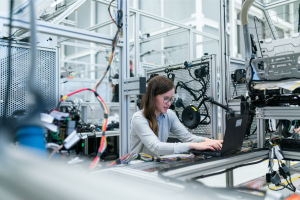The Growing Significance of ESG in Manufacturing
ESG: you've probably heard this acronym recenly, right? In today's rapidly evolving industrial landscape, the role of Environmental, Social, and Corporate Governance (ESG) criteria has gained substantial prominence within the manufacturing sector. This article delves deep into the reasons why ESG has become increasingly crucial, explores its multifaceted adoption across the industry, and examines the challenges and opportunities it presents. In 2022, the global sustainable manufacturing market was valued at $2.8 trillion and is expected to reach $4.4 trillion by 2027. (Source: Grand View Research) 72% of consumers are willing to pay more for products from sustainable brands. (Source: Nielsen) 85% of investors believe that ESG factors are important to their investment decisions. (Source: BlackRock) 70% of CEOs believe that ESG is a top priority for their businesses. (Source: World Economic Forum) The Imperative for ESG Integration in Manufacturing 1. Environmental Responsibility: Shaping the Future of Manufacturing Environmental sustainability has become a defining factor in manufacturing's future trajectory. Manufacturers now understand that their operations bear a direct responsibility for global environmental impacts. With approximately 20% of the world's carbon emissions originating from the manufacturing sector, ESG principles offer a roadmap for reducing this footprint. Companies are investing in cleaner production methods,…










